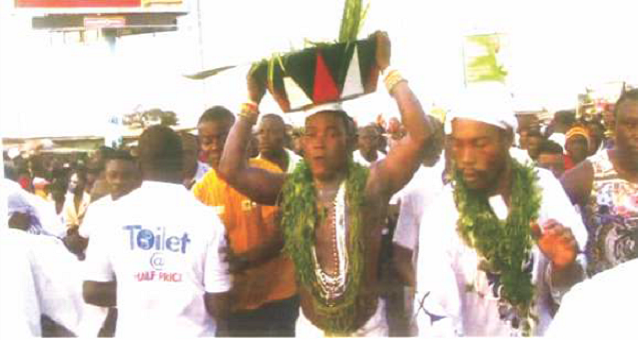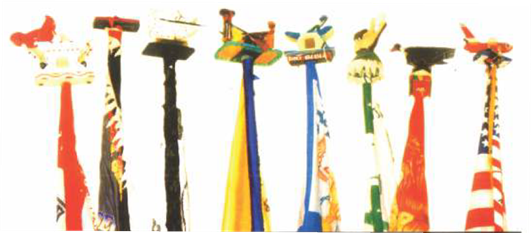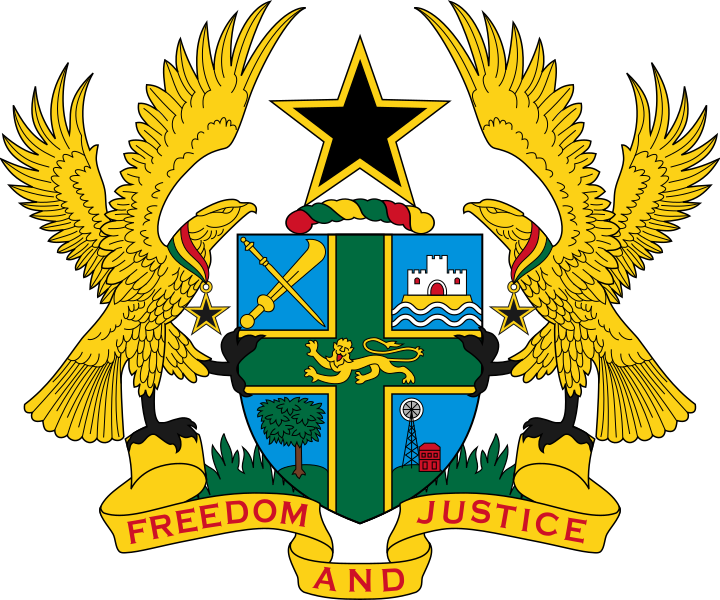HISTORY
HISTORY
BRIEF HISTORY ABOUT THE TESHIE HOMOWO FESTIVAL
As the last of the 6 Ga States, Teshie is also the last Ga town to celebrate its Homowo Festival from August to September each year. This strategy was a very smart military arrangement by the Ga State to forestall the incidence surprised attacks by enemies of the Ga State. Therefore, while the people of Ga Mashie are revering and merry-making, the other Ga towns lying to the east would remain alert and on standby to repel any attacks by enemies.
Homowo is a period of merry-making following an extended period of draught which confronted the Ga-Dangme people during their long trek from Sudan to their present settlements. Homowo means “hooting at hunger” and is likened to the Passover Feast of the Hebrews.
The Teshie Homowo festival serves as a social control mechanism whereby virtue is eulogised and vice is ridiculed through folklore music and dance on the streets of Teshie by minstrel or kpãshimɔ groups for 30 days nonstop.
The festival has three main segments involving closed door pre-homowo activities, Public Events and post Homowo rites.
The first major public Hɔmɔwɔ event is the Nshɔnaa Wɔjiiajamɔ, pacification of Sea Deities at Akɛlɛ Naa by the Chief Fisherman on the first Tuesday of August each year. A goat is slaughtered and the blood sprinkled on the sacred stone which marks the boundary between Teshie and Nungua.
Nshɔbulemɔ, the ban on deep sea fishing takes place the next day. Two experienced fishing crews are sent on a hook-and-line fishing expedition. They return twenty-four hours later with their catch which is used in the preparation of thetraditional food, Kpokpoe, in all the principal traditional houses some 19 days later.The Gbɛmlilaa ceremony which marks the one month banning of drumming and dancing and excessive noise making is held the following Monday. Gbemlilaa marks a beginning of the Ga Lent season for priests and the mediums. To create the congenial atmosphere for interaction between the living and spiritual entities there is total abstinence from sex for the prelate throughout the 30-day lent period. All shrines and courts also go on compulsory recess. And there is total ban on quarrelling, curses and casting of spells.
Hɔmɔwɔ Dzu, the Hɔmɔwɔ Homecoming ceremony marks the return of all migrant natives back to Teshie for the Festival two weeks later.
Hɔmɔwɔ Dzufɔ is dedicated towards the preparation, sprinkling and feasting on Kpokpoi. The special meal for the occasion is steamed-unfermented corn flour and palm-nut soup. Hɔmɔwɔ Shɔ popularly called Ŋɔɔwala is the day dedicated towards the settlement of family disputes, the presentation of token gifts to all mothers' in-law, mandatory visits to ancestral homes and revelling or drinking spree.
Hɔmɔwɔ Harvest is the annual Football match between Teshie and Nungua on the Saturday after Ŋɔɔwala. At halftime the football fans are treated to some rib-cracking performances by local comedians clad in jute sacks and fancy costumes. Kpãshimɔ or the Teshie Street Carnival is the biggest cultural event in Ghana comparable to only the Street Carnival of Brazil. The original Kpãshimɔ groups perform under the following Flags: Kɔɔle Woko, Gbeenimatele, Tafo Yɛ Fɛo, Akrɔ Greece, Mind You, Ghana and Jah Labour. There are several other non-uniformed new Kpãshimɔ groups such as Port, Kane, Golongolo, etc. All the kpãshimɔ groups are led on the kpãshimɔ marathon by the cult of Tsese for a week.
 The Tsese is a wooden bowl filled with spiritually-charged water and herbs and
carried on the head. The content of the Tsese is believed to be imbibed with strong
spiritual powers. Therefore, people with all manner of problems will throw coins into
the Tsese to coax the carrier to pour a little of the content on them. By so doing, they
get answers to their spiritual problems. The Tsese appears in public on only two
occasions during the year i.e., Kpãfaa or start of Kpãshimɔ and the Tesebumɔ which
effectively brings the customary homowo events to a close.
The Tsese is a wooden bowl filled with spiritually-charged water and herbs and
carried on the head. The content of the Tsese is believed to be imbibed with strong
spiritual powers. Therefore, people with all manner of problems will throw coins into
the Tsese to coax the carrier to pour a little of the content on them. By so doing, they
get answers to their spiritual problems. The Tsese appears in public on only two
occasions during the year i.e., Kpãfaa or start of Kpãshimɔ and the Tesebumɔ which
effectively brings the customary homowo events to a close.
TESHIE HISTORY
Teshie is believed to be the last of the six Towns of the Ga State to be established after Ga Mashie, Osu, La, Nungua and Tema. Some say Teshie was established in 1710 but historians like Carl Reindoff and W. E. Ward recorded that between 1660 and 1702, Teshie already had a full military capacity and the town participated actively in the Akwamu and Anlo Wars. The town accommodates many strategic security installations such as the Southern Command of the Ghana Armed Forces, the Military Academy and Training School, Field Engineers Regiment, the Ghana Armed Forces Staff College and the Kofi Annan International Peacekeeping and Training Centre.
In line with current Local Government Policy, Teshie became part of the Ledzokuku-Krowo Municipal Assembly (LEKMA) in 2009. At the time, Teshie had an estimated total land area of 50 square kilometres and an estimated population of 261,571. Per the tenets of the general population density which is calculated at 5,231 persons per square kilometre, Teshie is the ninth most densely populated town in Ghana. The population is spread across eight major settlements in the Municipality namely; Hedzoleman (14,726), Martey Tsuru (5,807), North Teshie (73,109), South Teshie (45,461), Teshie/Nungua Estates (24,143) and Teshie-Wajir Barracks (2,956). Out of this total population 44.3% are Ga/Adangbe, 34.8% are Akan, 12.8% are Ewe and 9.5% for the other minority immigrant communities.
Teshie is constituted by five main clans or quarters made up of fifty-four (54) traditional houses and thirty-two (32) villages [see details on page 23]. The five Quarters which form the Teshie paramountcy include Lenshie, Kle, Krobo, Agbawe and Gbugblah. At the foundation of the town, the roles of Paramount Chief and Teshie Dzasetse were conferred on the Lenshie Clan because its patriarch, Numo Trebi, was the original and earliest settler in Teshie cerca 1642. Nuumo Trebi had three surviving children: Ashikwei, Ashitey and Asheley and these children established the Lenshie Dynasty namely Ashikwei We, Ashitey We and Asheley or Okpong We (female line). Krobo assumed the role of Mankralo, Kle was made the seat of the Osabu/Ayiku Wulomo (Chief Priest), Agbawe took the role of Shikitele (Senior Linguist) while Gbugblah was given the office of Atofotse (Treasurer and Junior Linguist).
According to the Ga State Council (1941), the appointment of a Teshie Mantse involves two elections. The first election involves the nomination and selection of a candidate by the Teshie Dzasetse followed by the second and the proper election by the Kingmakers comprising the Teshie Mankralo, the Osabu/Ayiku Wulomo, the Teshie Shikitele and the Teshie Dzasetse. It is trite knowledge that whenever the black stool becomes vacant the Kingmakers, through the Shikitele, would first request a candidate from the Teshie Dzasetse. In accordance with the established order of rotation, the latter approaches the head of the next ruling house in line to provide a candidate for presentation to the kingmakers. If the candidate is approved and accepted, the kingmakers would pay head money to the family of the chief-elect. Thereafter the candidate would be confined and installed on the black stool by the Mankralo and his colleague kingmakers after which the new chief would be publicly out doored.
As one of the famous coastal communities in Accra, the natives of Teshie are predominantly fishermen and are very famous for their dexterity and industry as seafarers. However, during the off-peak season, the fishermen engage in inland fishing activities using cast nets in the Kpeshie and Sango lagoons. In addition, the natives engage in small-scale subsistence farming growing crops like watermelon, okra, pepper, tomato, and garden eggs. However, the over-exploitation of the fish stock by foreign vessels, the annexation of the available farmlands by the building and construction industry as well as the heavy pollution of the Kpeshie and Sango lagoons by human-centered activities along the catchment areas of the two water bodies have worsened the economic fortunes of the natives. Consequently, poverty is rife in Teshie and the majority of the young men and women are unemployed while the majority of children of school-going age are roaming the beaches without going to school. These developmental problems have also turned Teshie into a hotbed for violent chieftaincy conflicts and the indiscriminate sale of stool lands. Consequently, there has not been any paramount chief in Teshie for the past 29 years.

